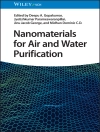Research on molecular assembly of biomimetic systems has evolved rapidly over the past years and the time is now ripe for a book that comprehensively summarizes both the fundamentals and recent developments with practical usage in mind.
The proposed book covers fundamental and practical techniques of molecular assembly of biomimetic systems, for instance, layer-by-layer assembly, self-assembly, and microcontact printing. Biomimetic systems selected for inclusion in the book are mostly related to biological fields and make important contributions to biotechnology. The categories of assembled biomimetic systems include biomimetic membranes, biogenic microcapsules, molecular motors, biomimetic interfaces and biomimetic materials such as tubes, vesicles, fibers and ribbons. These assembled molecular mimetic systems are currently abundantly used in advanced fields of nanotechnology, biotechnology and materials science. The book also contains many recent examples and references in addition to describing the fundamental science. It will be useful for graduate students as well as researchers carrying out R&D in nanotechnology, biotechnology and material sciences.
Содержание
Preface
Introduction
BIOMIMETIC MEMBRANES
Introduction
Lipid Monolayers
Modeling Membrane Hydrolysis In Vitro
Polyelectrolyte-Supported Lipid Bilayers
Conclusions and Outlook
LAYER-BY-LAYER ASSEMBLY OF BIOMIMETIC MICROCAPSULES
Introduction
Layer-by-Layer Assembly of Polyelectrolyte Multilayer Microcapsules
Biointerfacing Polyelectrolyte Microcapsules — A Multifunctional Cargo System
Application of Biomimetic Microcapsules
Conclusions and Perspectives
F0F1-ATP SYNTHASE-BASED ACTIVE BIOMIMETIC SYSTEMS
Introduction
F0F1-ATPase — A Rotary Molecular Motor
Reconstitution of F0F1-ATPase in Cellular Mimic Structures
Conclusions and Perspectives
KINESIN-MICROTUBULE-DRIVEN ACTIVE BIOMIMETIC SYSTEMS
Introduction
Kinesin-Microtubule Active Transport Systems
Active Biomimetic Systems Based on the Kinesin-Microtubule Complex
Layer-by-Layer Assembled Capsules as Cargo — A Promising Biomimetic System
Conclusions and Perspectives
BIOMIMETIC INTERFACE
Introduction
Preparation and Characterization of Biomolecule Patterning
Polymer Brush Patterns for Biomedical Application
Conclusions and Perspectives
PEPTIDE-BASED BIOMIMETIC MATERIALS
Introduction
Peptides as Building Blocks for the Bottom-Up Fabrication of Various Nanostructures
Peptide-Inorganic Hybrids
Applications of Peptide Biomimetic Nanomaterials
Conclusions and Perspectives
Об авторе
Junbai Li is a Director of the Key Lab of Colloid and Interface Science, Institute of Chemistry, Chinese Academy of Sciences (ICCAS). He received his BS and Ph D degrees from Jilin University and spent two years as a Postdoctoral Fellow and Group Leader at the Max Planck Institute of Colloids & Surfaces, for the collaborative project ‘Molecular Assembly of Biomimetic Systems’. He then worked as a Full Professor at the Institute of Photographic Chemistry, CAS, before moving to his current position in 1999. His research interests encompass supramolecular chemistry and surface science, including the boundary research areas of organic chemistry, physical chemistry, biochemistry, and materials chemistry. His major interests include the molecular assembly of biomimetic systems, biointerfaces, and nanostructures.
Qiang He graduated from the Inner Mongolia University and received his Ph D degree on physical chemistry in 2003 from the Institute of Chemistry, the Chinese Academy of Sciences. Then he joined Prof. Li’s group and became an associate professor in the Institute of Chemistry, the Chinese Academy of Sciences. He spent four years as a research fellow of the Alexander von Humboldt Foundation in the Max Plank Institute of Colloids and Interfaces, Germany. Currently, he is a full Professor at the Micro/Nano Technology Research Centre, Harbin
Institute of Technology, China. His research interests include self-assembled active systems, stimuli-responsive surface patterning for biomedical application.
Xuehai Yan received his BE degree in Chemical Engineering in 2002 and MS degree in Applied Chemistry in 2005 from China University of Mining and Technology. Then he joined the Institute of Chemistry, the Chinese Academy of Sciences, where he obtained his Ph D in Physical
Chemistry in 2008. Currently he is working as a research fellow of the Alexander von Humboldt Foundation at the Max Planck Institute of Colloids and Interfaces in Germany. His research interests are focused on self-assembly of biomolecular materials, in particular the use
of amino acids or peptides as an assembly building block, and supramolecular interactions in the process of self-assembly.












